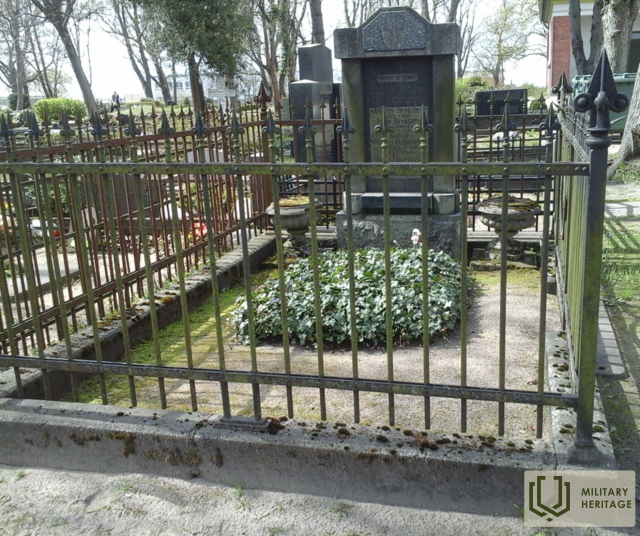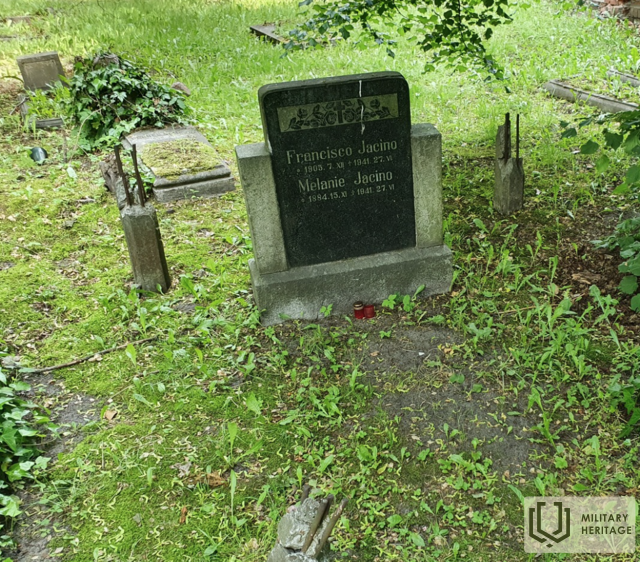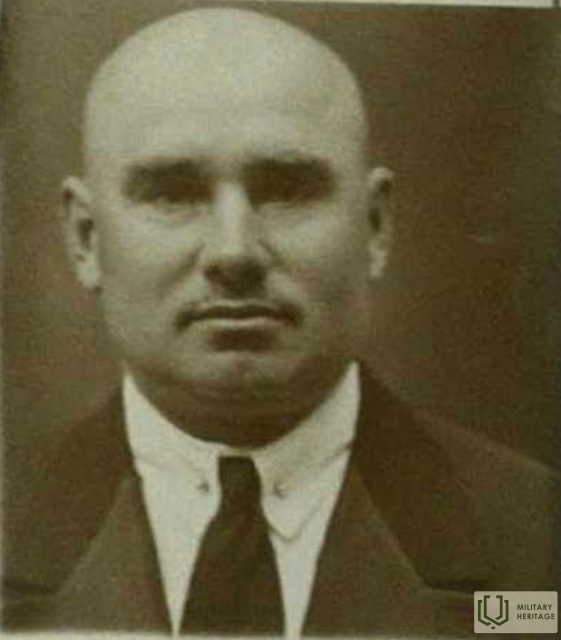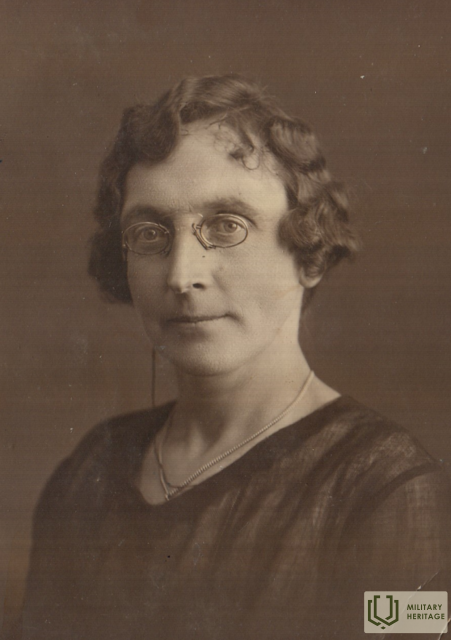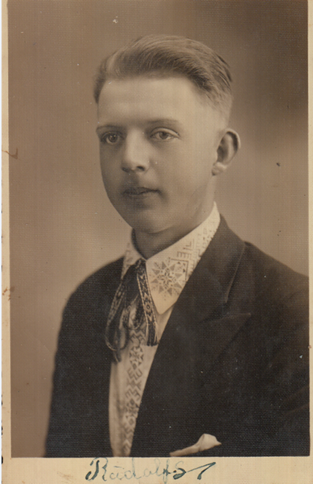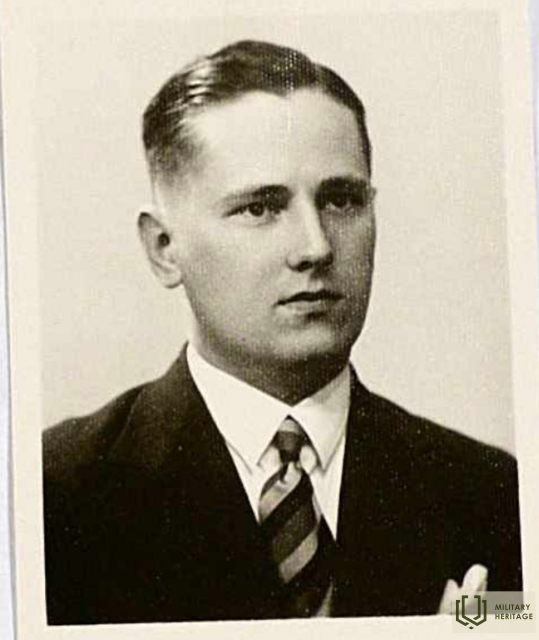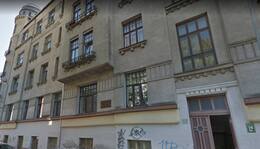Extrajudicial shooting of civilians in Liepāja's "Blue Miracle"
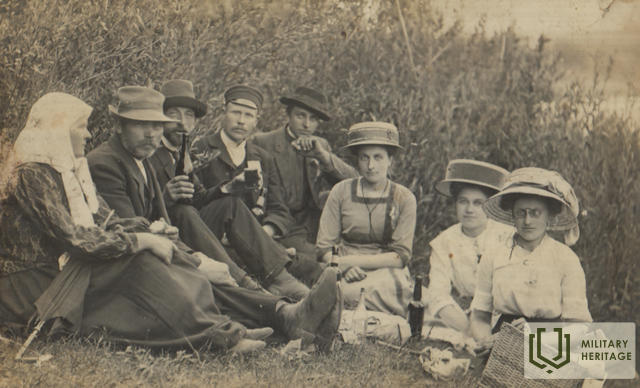
Extrajudicial killings in Latvian territory during the war, in late June and early July 1941, were the last manifestation of repression and violence in the first stage of the communist occupation, which ended with the entry of Nazi German troops into the entire territory of Latvia.
The reason for the shooting was terrible and tragic – it was no longer possible to transfer the prisoners to Russia, but it was not allowed to leave them alive. As a result, during the war, extrajudicial shootings of residents also took place in Liepāja, similar to the Riga Central Prison, Valmiera Prison, Valka and Rēzekne militia, and Greizā kalns near Ludza. In Liepāja, this crime of the Soviet occupation power was carried out in the “Blue Miracle” – in the Liepāja militia building, at Republikas Street 19.
The reasons for this tragedy lie in the paranoid worldview of the communist occupation regime. Literally from the very beginning of its existence in 1917, one of the most important things, along with the “world revolution”, became the constant search for and neutralization of external and internal enemies.
The extrajudicial killings during the war, in late June and early July 1941, were the last manifestation of repression and violence in the first stage of the communist occupation, which ended with the entry of Nazi German troops into the entire territory of Latvia.
These crimes were committed by Cheka officers, militiamen, workers' guards, communist party and Komsomol activists.
According to the information obtained so far, the arrests of civilians in Liepāja during the war began on June 23, 1941. The total number of those arrested is unknown, but it is known that 18 people were shot by the Liepāja militia, but at least five managed to stay alive and escape.
The reason for the shooting was terrible and tragic – it was no longer possible to transfer the prisoners to Russia, but it was not allowed to leave them alive. As a result, during the war, extrajudicial shootings of residents also took place in Liepāja, similar to the Riga Central Prison, Valmiera Prison, Valka and Rēzekne police stations, and Greizā kalns near Ludza. The aforementioned crime took place in the “Blue Miracle” – the Liepāja police building, at Republikas Street 19.
The names of sixteen people shot by the Liepāja police are currently known:
1. Bezalel Geshaya–Shloma d. Biļeckis (1879). Jew. Lived in Liepāja, Graudu Street 6. He probably owned a shop at Graudu Street 50.
2. Andrejs Brekteris (1872). Mechanic. The sources mention two possible addresses: Lāču Street 31 or T. Breikša Street 32. A. Brekteris was awarded the Cross of Recognition in 1938. For some time he was the head of the Jaunliepāja Lutheran congregation.
3. Krišs Viļa d. Hintenbergs (1914). Worker at the shoe factory “Kopsolis”. Lived at 49 Dārzu Street.
4. Alfred Roberta d. Holcmanis (1914). Born in Purmsāti parish. Office worker at the Liepāja wire factory (“Red Metallurg”). Security guard. Football player. Lived at F. Brīvzemnieka Street 10–3. Arrested on June 23, 1941.
5. Francisco Francisco d. Jacino (1905). Catholic German. Graduated from the electrical engineering department of Liepāja Technical University. Engineer. Lived at Kr. Valdemāra Street 18.
6. Melanija Jacino (1884). German Catholic. Mother of F. Jacino. Lived at Kr. Valdemāra Street 18.
7. Alberts Jāņa d. Kalve (Winčels) (1907). Born in Moscow. Rower, member of “Universitātes Sportas”. Changed his surname from “Winčels” to “Kalve” in April 1940. Deputy prosecutor of the Liepāja Regional Court. Married to Biruta Winčels (née Bruņenieci). Lived in Liepāja, Kr. Barona Street 19. Arrested on June 23, 1941.
8. Jāzeps Keiselis (1886). Born in Rēzekne district. Catholic. Until the occupation of Latvia he was a police officer, and after that a worker. Lived at 19 Ukstiņa Street.
9. Francis–Einārs Eduarda d. Rozenholms (1892). Probably a Finn by nationality. Blacksmith of the joint-stock company “Pluto”. In 1940-41, the factory was part of the industrial enterprise “Metal”, which also included the Liepāja chariot factory and the machine-building plant “Standarts”. Recognized as a “Stakhanovite” in May or June 1941, because “by rationalizing the work of hammer pressing, he increased productivity by 150%”. Lived at Raina Street 52. Arrested on June 23, 1941.
10. Līze Miķeļa m. Rošteina (nee Strazdiņa) (1885). Until the occupation of Latvia, she was the owner of a shop at 21 Bāriņu Street. She lived there. Sister of Kate and Fričis Strazdiņas, as well as sister of Rūdolfs Strazdiņas' father.
11. Kate Miķeļa m. Strazdiņš (1883). Saleswoman. Lived in Liepāja, T. Breikša Street 5. Sister of Līze Rošteina and Fričis Strazdiņš, as well as sister of Rūdolfs Strazdiņš's father.
12. Fricis Miķeļa d. Strazdiņš (1880). Salesman. Lived at Sienu Street 11. Brother of Līze Rošteina and Kate Strazdiņš, as well as brother of Rūdolfs Strazdiņš's father.
13. Rūdolfs Kristapa née Strazdiņš (1912). Farmer. Lived in “Kugrā” of Durbe parish. Son of Līze Rošteina, brother of Kate and Fričis Strazdiņš.
14. Augusts Otto d. Tauriņš (1910). Baptist. Liepāja library attendant. Lived in the library house at Zivju Street 7.
15. Eugene Karla d. Vilamovskis (1880). The heavy woodcutter. Lived at 52 Dzintara Street.
16. Jānis Viļa d. Vilbrants (1876). Pensioner. Lived in Liepāja, F. Brīvzemnieka Street 47.
Unfortunately, the identities of the two killed are still unclear. Lawyer Linards Muciņš, writing about the tragedy that occurred at the "Blue Miracle", indicates that Ernests Briķis was also among those shot.
The shooting took place early in the morning of June 27, which was a Friday. The militiamen began to call the detainees out of their cells by list. Unfortunately, the discovery of the shot victims was not followed by a forensic examination and the preparation of relevant documents.
Information regarding the burial places and times of those shot in the "Blue Miracle" is incomplete. So far, only the burial places of ten people have been identified.
Although incomplete, information has also survived about 6 individuals who were involved in the shooting of the detainees and were shot for the crime they committed during the German occupation.
Inese Dreimane, historian, writer, publication "Extrajudicial shooting of civilians by the Liepāja militia or the so-called 'Blue Miracle' at the end of June 1941"
https://www.delfi.lv/news/versijas/civiliedzivotaju-beztiesas-nosausana-liepajas-milicija-jeb-ta-sauktaja-zilaja-brinuma-1941-gada-junija-beigas.d?id=55323776
Related timeline
Related objects
Liepaja Police Building or "Blue Miracle"
In Liepāja, the communist occupation regime's institution, the militia, was located in a building at 19 Republikas Street, which the people of Liepāja had called the "Blue Miracle" since its construction at the beginning of the 20th century. The headquarters of the Cheka, on the other hand, was located at 19 Toma Street. Shortly after the occupation, it acquired the social designation "Red Miracle".
In the course of the investigation of the crimes of the communist regime to date, it has been established that no executions or extrajudicial executions took place directly in either the Liepāja Cheka building, i.e. the “Red Miracle”, or in the prison. All detainees who were in these places, due to the outbreak of hostilities in the territory of Latvia, starting from June 23, 1941, were transferred to prisons in Russia. This affected both detainees who were arrested for so-called “political” crimes and criminal offenders, regardless of whether the person was under investigation or had already received a sentence.
The transfer of prisoners was determined by the order No. 2455/M of the People's Commissar of State Security of the USSR Vsevolod Merkulov of June 23, 1941, which was addressed to the chiefs of the NKGB of the Latvian SSR, the Estonian SSR and several regions of the Ukrainian SSR. The reason for the shooting was terrible and tragic – it was no longer possible to transfer the prisoners to Russia, but it was not allowed to leave them alive. As a result, during the war, extrajudicial shootings of residents also took place in Liepāja, similar to the Riga Central Prison, Valmiera Prison, Valka and Rēzekne militia, and Greizā kalns near Ludza. The aforementioned crime took place in the “Blue Miracle” – the Liepāja militia building, at Republikas Street 19.




